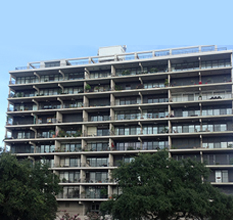Concrete, having relatively little tensile strength, generally requires reinforcing steel be integrated with it to give it the capability of spanning between supports, such as a beam, or floor or deck plank. Pre cast, pre-stressed concrete structural components have steel reinforcement in the form of steel cables in the long direction stressed (stretched) prior to the concrete being cast around them. After the concrete is cured, the force stretching the cables is released. The cables attempt to rebound to their original state. However, having been cast into the concrete, their effort to rebound transfers this force to the concrete beams, planks, and panels, in effect squeezing them together. It is this force that allows the concrete components to span between supports.
A side effect of this constant force in the cables, in effect “squeezing” the concrete together, that is, over time, the concrete components will shorten, a phenomenon referred to as creep. Creep is defined as its time-dependent deformation resulting from the presence of stress.” Pre-cast concrete components actually get shorter with the passage of time, from the date they were first cast.
If the design of the structure allows for this reduction in length, no distress or cracking will take place. However, if this movement is not provided for in the design, and the connections are restrained from movement, then this incremental reduction in length over time can result in the components pulling away from their connections, creating distress in the form of small cracks at the supports.
When these components are used as one component of the weather envelope, water will find its way into these cracks and then into the structure.
1 Design of Pre stressed Concrete Structures, by T. Y. Lin and Ned H. Burns, Third Edition, John Wiley & Sons, Inc., New York, 1981, page 43



